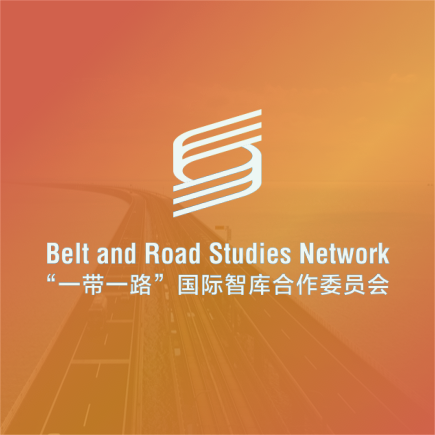
Key Points
South Korea seeks to become a global leader in the production and deployment of fuel cell electric vehicles (FCEVs) and large-scale stationary fuel cells for power generation.
The Moon Jae-in government (2018–) has identified hydrogen as a key engine of economic growth and job creation.
South Korea has the third-largest public investment in hydrogen after Germany and Japan.
South Korea is beginning to develop domestic infrastructure to import hydrogen.
While South Korea has competitive heavy industry sectors, such as steelmaking and shipbuilding, the use of hydrogen in these hard-to-decarbonize sectors has not yet emerged as a primary focus of the government in its pursuit of a hydrogen economy.
Analysis
Vision
South Korea is pursuing a hydrogen economy for economic growth and industrial competitiveness more than for climate change objectives. In particular, South Korea sees hydrogen as a potential driver of economic growth worth 43 trillion won ($43 billion) and 420,000 new jobs.
South Korea has robust targets for hydrogen usage that it seeks to achieve by 2040. For consumption, South Korea aims to expand its annual market from 130,000 tons at present to 5.26 million tons per year. For the transportation sector, South Korea's New Deal (announced in 2020) sets the 2040 FCEV target to nearly 3 million, including 2.9 million domestically manufactured FCEVs, 30,000 fuel cell trucks, and 40,000 fuel cell buses. In 2020, South Korea led the world in FCEV installation, with over 10,000 FCEVs on the road, thereby doubling the national stock from 2019.
South Korea's 2040 vision also entails expanding the fleet of hydrogen refueling stations (HRSs). The Hydrogen Energy Network (HyNet) was established in 2019 with an initial investment of $119 million to expand the fleet from about two dozen HRSs in 2019 to 310 by 2022 and 1,200 by 2040. Also, by 2040, South Korea aims to deploy 15 gigawatts of utility-scale fuel cells.
South Korea's New Deal made hydrogen one of its central pillars that would help the country decarbonize while also recovering from the pandemic-induced economic slowdown. The government's vision has the backing of key South Korean industrial stakeholders, including auto manufacturers such as Hyundai Motors Group, whose own FCEV vision for 2030 is accompanied by investment plans of $6.7 billion.
Strategy
South Korea adopted the Hydrogen Economy Roadmap in 2019. In order to lay the legal foundations for the government's promotion of hydrogen and the implementation of safety standards for facilities, the Korean National Assembly passed the Hydrogen Economy Promotion and Hydrogen Safety Management Law ("Hydrogen Law") in January 2020. The Hydrogen Law, which went into effect in 2021, stipulates several important industrial strategy elements, such as supporting hydrogen-focused companies through research and development (R&D) subsidies, loans, and tax exemptions.
South Korea's efforts also include R&D on liquefied hydrogen storage technology and the reduction of transportation costs. Additionally, the roadmap notes the government's long-term aim of building a specialized hydrogen pipeline network across the country while the development of hydrogen-receiving infrastructure is set to begin in 2022. While about one-third of the country's hydrogen consumption in 2040 is estimated to be based on imported liquefied natural gas (LNG), KOGAS—South Korea's state-run utility—plans to invest $37 billion overseas by 2040 to establish renewable power generation facilities that produce hydrogen.
Large government funding underpins South Korea's effort to develop a hydrogen economy. The spending for FY2021 is $701.9 million, a 40 percent increase from 2020. Also, the government has committed $2.34 billion to establish a public-private hydrogen vehicle industry by 2022. At present, about half the cost of installing HRSs is subsidized by the government. Moreover, in 2019, the national and local governments provided subsidies for an FCEV purchase ranging from $27,300 to $30,300.
Since 2012, South Korea's renewable portfolio standard (RPS) has supported the deployment of large-scale stationary fuel cell power generation. Under the RPS, large power producers are mandated to meet a minimum portion of their power generation from new and renewable technologies, including fuel cell power generation. Additionally, the government has reduced the price of natural gas from the grid if it is used to produce fuel cells.
According to South Korea's economic ministry, five South Korean conglomerates have plans to invest $38 billion in hydrogen technology by 2030.
Geography
In a key step toward powering 10 percent of the country's cities, counties, and towns with hydrogen by 2030, the Korean government identified three cities as "hydrogen pilot cities" (Ulsan, Ansan, and Wanju) in 2019. These pilot cities will begin testing the application of hydrogen in transportation, industry, and space heating in 2022. To look at one example, the pilot city of Ulsan seeks to produce hydrogen from local petrochemical complexes to power buildings and to refuel FCEVs and ships.
South Korea is reportedly exploring various projects with potential hydrogen resource suppliers, such as Australia and Saudi Arabia. For example, Hyundai OilBank Co. plans to take liquefied petroleum gas (LPG) cargoes from Saudi Aramco, convert the LPG into hydrogen, and ship back the carbon dioxide that was emitted in the process back to Saudi Arabia. Additionally, South Korea and Norway announced in 2019 their cooperation on shipbuilding for liquefied hydrogen transportation.
今年1月,新冠疫情突然而至。为了防止疫情扩散,我国采取了史无前例的交通阻断及人流限制措施,这也为我国农业农村经济发展带来了巨大挑战。

A New Model for Human Advancement and Its Global Significance
2024-11-11